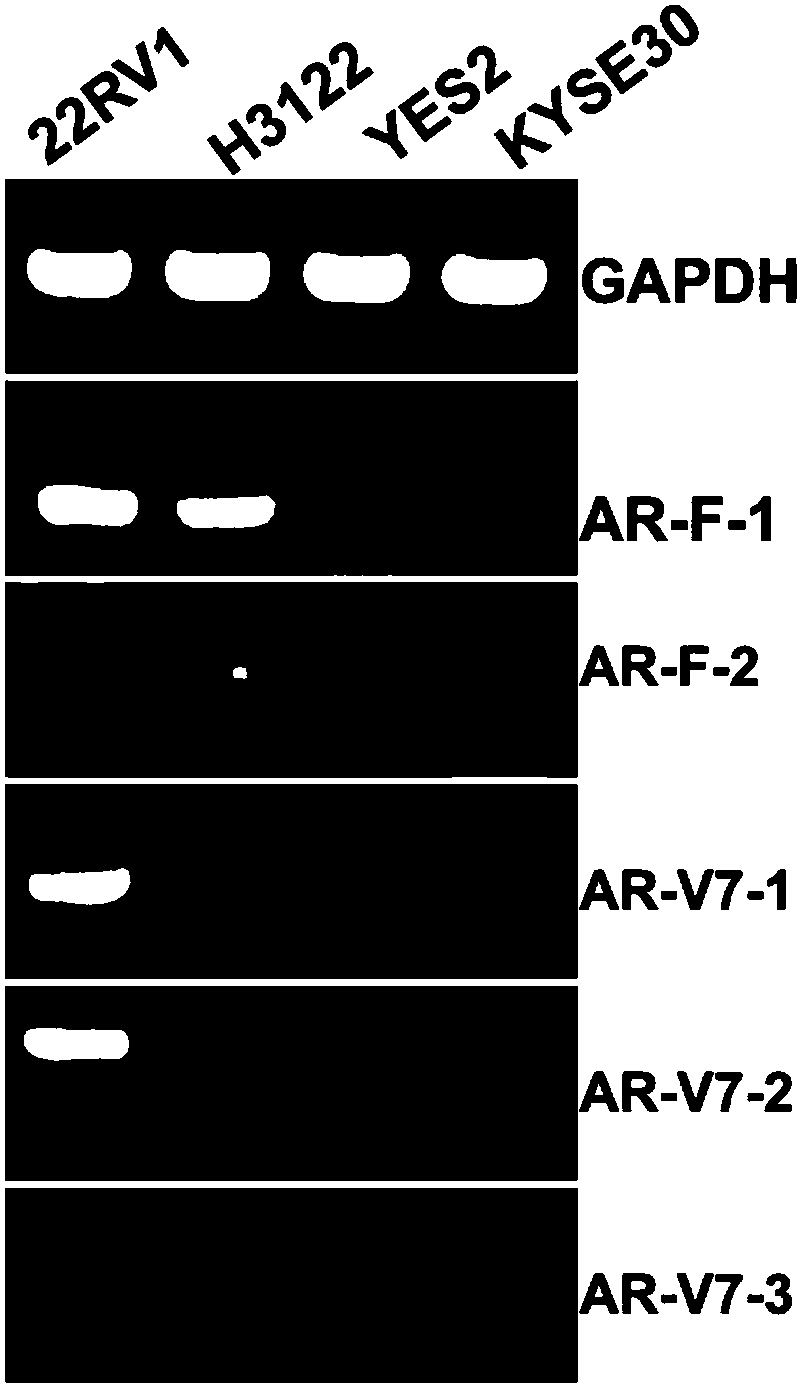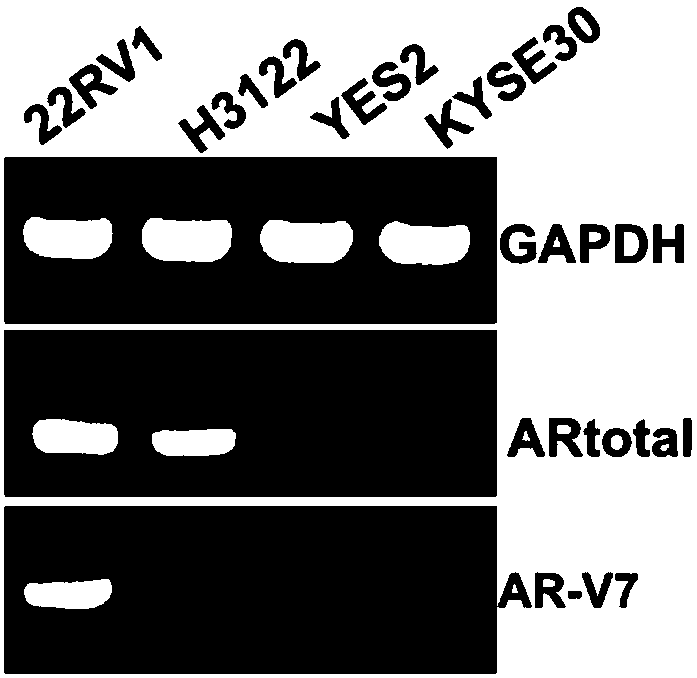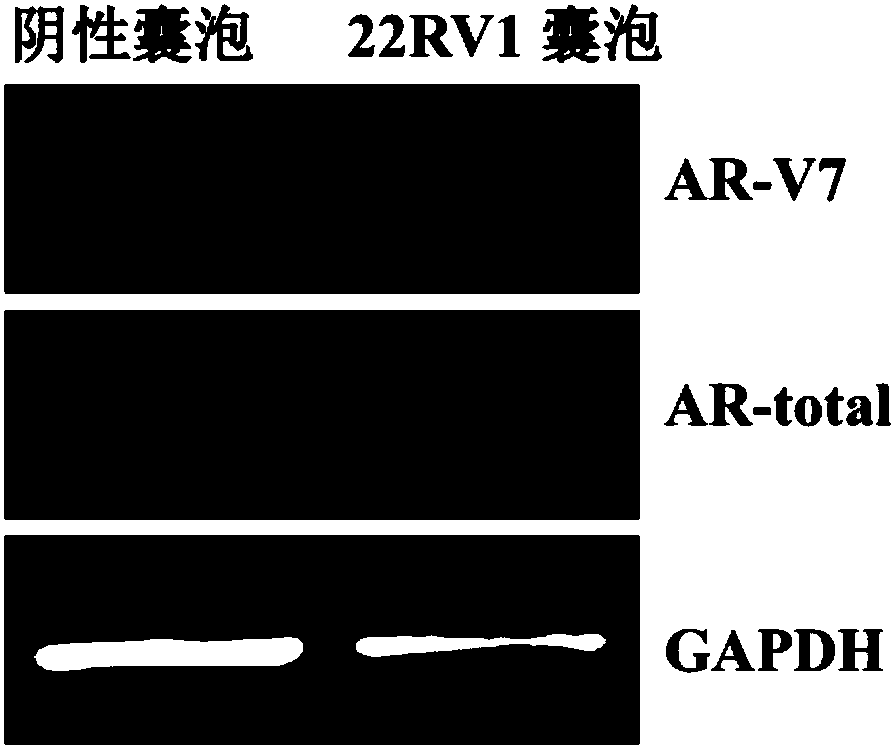Primer and probe for detecting AR-V7 and AR in vesicle based on qPCR or digital PCR technology
A technology of AR-V7 and probe, which is applied in the field of primers and probes for detecting AR-V7 and AR in vesicles, can solve the limitation of CTC number in circulating tumor cells, low detection sensitivity of AR-V7, and can not be solved well problems and other problems, to achieve the effect of fast detection speed, high sensitivity and low detection cost
- Summary
- Abstract
- Description
- Claims
- Application Information
AI Technical Summary
Problems solved by technology
Method used
Image
Examples
Embodiment 1
[0047] Example 1 Establishment of vesicle-based detection methods for AR-V7 and full-length AR
[0048] The invention uses the AR-V7 positive cell line 22RV1 as a template to construct an AR-V7 fluorescent quantitative PCR detection system and a digital PCR detection system, and simultaneously detects AR-V7 and full-length AR. The method for detecting the full length of AR-V7 and AR comprises the following steps:
[0049] 1. According to the human AR-V7 (NCBI sequence number NM_001348061.1) and AR full-length (NCBI sequence number NM_000044.4) gene sequences published by the NCBI database, specific primers and probes were designed.
[0050] The designed primers and probes are as follows (SEQ ID NO:1-6):
[0051] AR-V7 forward primer: 5′-AATGTTATGAAGCAGGGATGACTCT-3′
[0052] AR-V7 reverse primer: 5′-CTTTCTTCAGGGTCTGGTCATTT-3′
[0053] AR-V7 probe: 5′-AAAATTCCGGGTTGGCA-3′
[0054] AR forward primer: 5′-GGAATTCCTGTGCATGAAAGC-3′
[0055] AR reverse primer: 5′-CGATCGAGTTCCTTGATG...
Embodiment 2
[0073] Example 2 Specific verification of primers
[0074] Prostate cancer cell line 22RV1 (known to express both AR-V7 and full-length AR), lung cancer cell line H3122 (expressing full-length AR but not AR-V7), and esophageal cancer cell lines YES2 and KYSE30 (neither expressing AR The lysates of 4 cell lines, including full-length and AR-V7), were extracted with Ultrapure RNA Kit, and reverse-transcribed with Promega kit, using common PCR system (2ng / ul cDNA template 1ul, adding 1ul concentration 0.2uM forward primer and reverse primer, add 2×Taq MasterMix 10ul, add DEPC water to 25ul) for PCR amplification, and carry out agarose gel electrophoresis with the amplified product, the result is as follows figure 2 shown. The results show that using the specific primers designed in the present invention can only amplify the corresponding bands from AR-V7 positive cell lines, no matter the AR-V7 primer or the AR full-length primer is consistent with the expected result, indicati...
Embodiment 3
[0075] Example 3 qPCR amplification experiment of cell line vesicles
[0076] The cell supernatants of the prostate cancer cell line 22RV1 and the esophageal cancer cell line KYSE30 were collected to extract vesicles, and the obtained vesicles were extracted with Ultrapure RNA Kit, reverse-transcribed with Promega kit, and qPCR system (cDNA Template 1ul, add 1ul forward primer and reverse primer with a concentration of 0.2uM and 2ul probe with a concentration of 0.2uM, add 2×Taq MasterMix 10ul, add DEPC water to 25ul) for qPCR amplification (reaction conditions are the same as the implementation Example 1), and carry out agarose gel electrophoresis with the amplified product, the result is as follows image 3 shown. The results showed that the corresponding products could be amplified in the vesicle RNA of the positive cell line 22RV1, while the vesicle RNA of the corresponding negative cell line KYSE30 were all negative, indicating that in the vesicle RNA, the primer sequenc...
PUM
 Login to View More
Login to View More Abstract
Description
Claims
Application Information
 Login to View More
Login to View More - R&D
- Intellectual Property
- Life Sciences
- Materials
- Tech Scout
- Unparalleled Data Quality
- Higher Quality Content
- 60% Fewer Hallucinations
Browse by: Latest US Patents, China's latest patents, Technical Efficacy Thesaurus, Application Domain, Technology Topic, Popular Technical Reports.
© 2025 PatSnap. All rights reserved.Legal|Privacy policy|Modern Slavery Act Transparency Statement|Sitemap|About US| Contact US: help@patsnap.com



